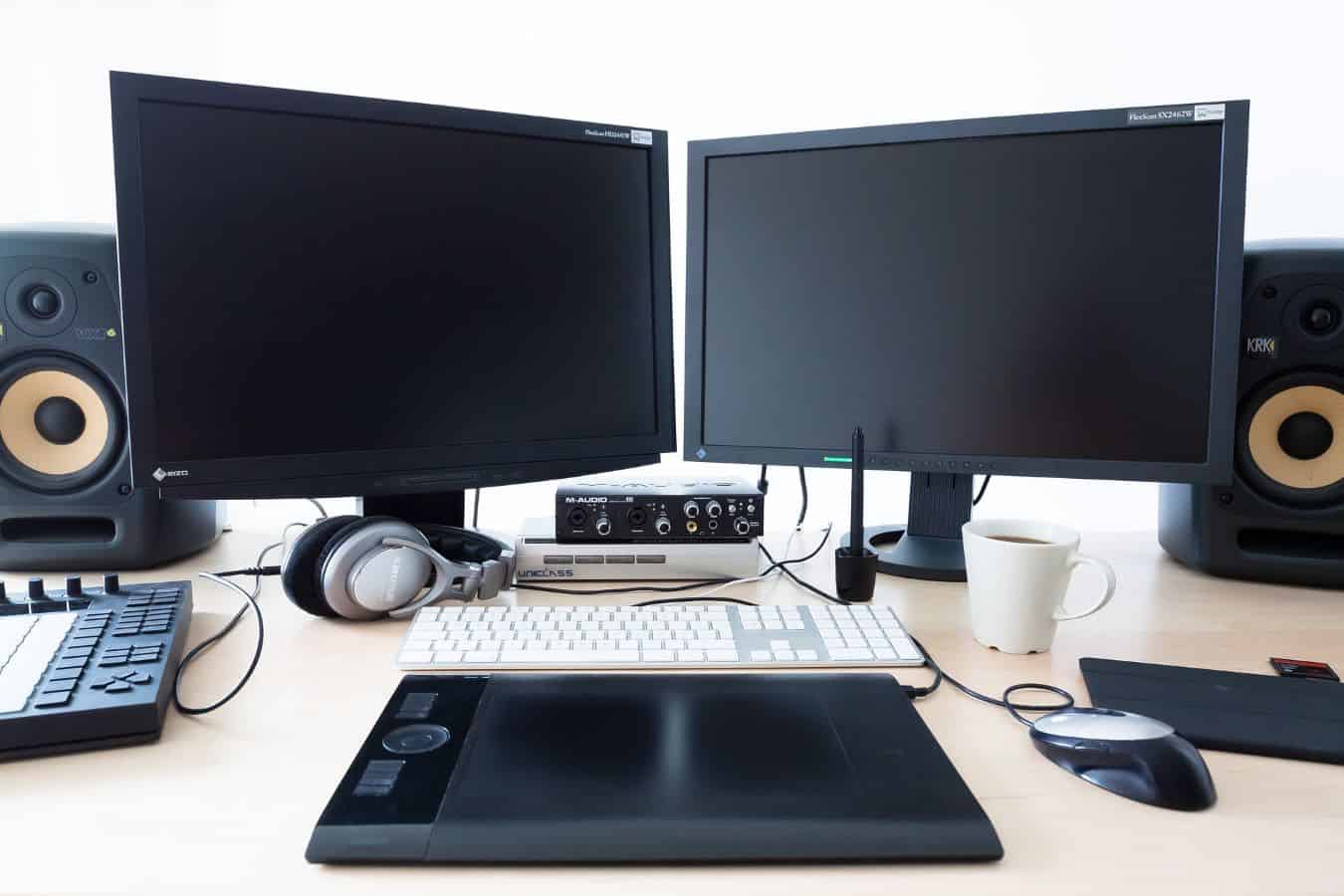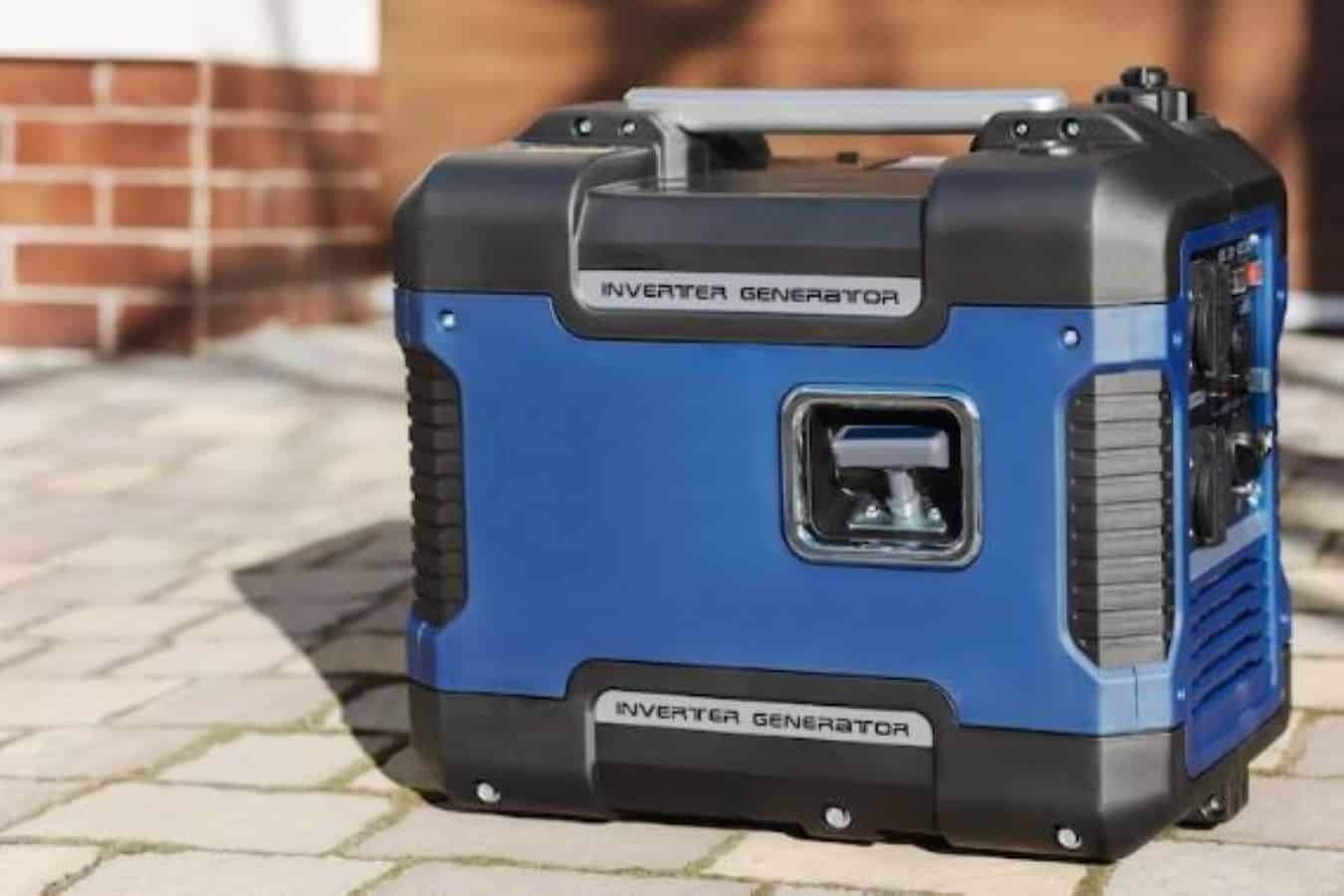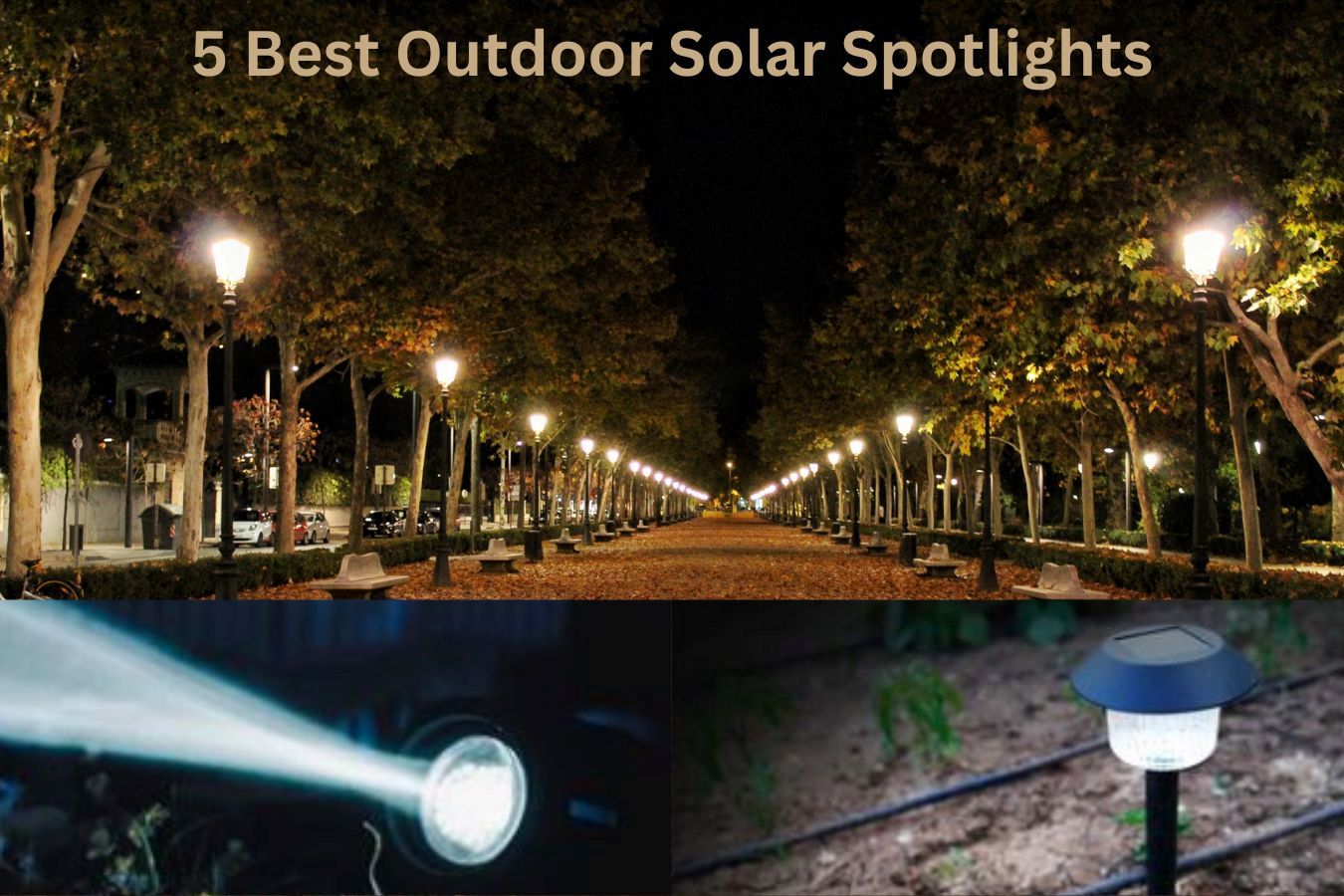Are you installing a solar energy system for your home, and do you need an MPPT solar charge controller that suits your installation? Then, read this article on the 5 Best 60A MPPT Solar Charge Controllers to make an excellent choice.
This article has all the details and guides you need to choose a good 60-amp MPPT charge controller for your solar installation. Also, it selects the 5 best 60A MPPT solar charge controllers that will serve you best.
To ease your reading, this article is presented in sections, beginning with an overview of solar charge controllers. The next section contains the pros and cons of using MPPT solar charge controllers.
Subsequently, the next section contains some of the factors you need to consider when choosing a solar charge controller.
Furthermore, the specifications of my top picks are compared in a table in the next section. This is followed by detailed explanations of each of the products.
However, I recommend that you go for the best, which is PowMr MPPT Charge Controller or any of the other four. These products will serve you best.
In conclusion, I will provide answers to some frequently asked questions on MPPT charge controllers, and then I will share my final thoughts.
5 Best 60A MPPT Solar Charge Controllers: Overview
Solar technologies are very useful in generating electricity for use in our homes, offices, schools, etc. These solar technologies harvest the energy from the sun as photons and use it to generate electricity in the form of direct current (DC).
However, solar panels are used to harvest this energy from the sun. These solar panels use the photoelectric effect to convert the energy from the sun to direct current (DC).
Nevertheless, the energy from the sun varies according to the weather. This results in a variation in the magnitude of the DC voltage at the output of the solar panels.
When the intensity of the sunlight on the solar panels is high, the voltage at the panel’s output also becomes high. As a result, the voltage might be too high for the appliances that use the electricity from the solar panels.
Hence, a device is installed to regulate the voltage from the solar panel’s output to save the appliances, the solar battery, and even the inverter from overvoltage. This device is called a solar charge controller.
Therefore, a solar charge controller is an electronic device that regulates the voltage from the solar panel and controls the charging rate of the solar battery.
Furthermore, there are two types of solar charge controllers. These are pulse width modulation (PWM) and maximum power point tracking (MPPT) charge controllers.
However, this article focuses on the MPPT solar charge controllers. The MPPT solar charge controller consists of electronic components like microcontrollers, transistors, capacitors, diodes, etc.
Thus, the MPPT charge controller is a DC-to-DC converter that maximizes the efficiency of the solar panel by optimizing the voltage match between the solar panels and the batteries.
Now, let us discuss the pros and cons of MPPT solar charge controllers.
5 Best 60A MPPT Solar Charge Controllers: Pros And Cons
Several advantages are associated with using maximum power point tracking (MPPT) solar charge controllers. Also, it has a few setbacks, which are identified below.
Pros
The benefits of using MPPT charge controllers include:
Efficiency
The MPPT solar charge controller is more efficient than the PWM charge controllers. This is because the most recent technology adjusts its input voltage to obtain the maximum power from solar panels and transforms it to supply lower voltages than the battery requires.
Thus, the MPPT solar charge controllers convert excess voltage from the solar panels into amperage. Hence, it applies to a couple of different areas.
Reduction In Power Loss
Since the MPPT microcontroller can intercept much higher voltages in the solar panel cables and convert the excess voltage in the cables to amperes, it harnesses the power generated from the panel as much as possible.
Hence, the maximum power point tracking (MPPT) solar charge controller reduces the amount of power lost while transporting energy from the solar panel to the battery.
Prevention Of Reverse-Current Flow
When the solar panel stops collecting solar energy from the sun and generates electricity at night, the electricity stored in the battery could flow back to the solar panels. This backward flow of current is known as reverse current.
As a result of this reverse-current flow, the battery drains completely. Thus, you won’t have electricity to use at night despite the system’s hard work during the day.
However, the MPPT solar charge controllers prevent this waste from occurring. Once the system notices no power from the panels, it opens the circuit and prevents current from flowing in the opposite direction.
Gives Room For Future Expansion
The ability of the MPPT solar charge controller to safely handle excess voltage means that you can grow your system in the future.
Therefore, if you intend to grow your system in the future, you can move from 12-volt systems to higher-voltage systems without changing the charge controller.
Cons
Although the maximum power point tracking (MPPT) solar charge controller is highly beneficial, the following are some of its setbacks:
High Cost
One of the setbacks of the MPPT solar charge controller is that it is costly. It is about two or three times more expensive than the pulse width modulation (PWM) solar charge controllers.
Difficult To Handle
Another drawback of the MPPT solar charge controller is that it is larger and could be difficult to handle. Also, due to its size, it occupies more space than the PWM charge controller.
Shorter Lifespan
The maximum power point tracking (MPPT) charge controller has more electronic components and is subjected to more thermal stress.
Unfortunately, this thermal stress affects some of the electronic components that can be easily destroyed by high temperatures.
As a result, the lifespan of the MPPT solar charge controller is shorter than that of the PWM solar charge controller.
5 Best 60A MPPT Solar Charge Controllers: Factors To Consider
Before choosing a solar charge controller for your solar energy system, the following are the factors you should consider.
Voltage Rating
The voltage ratings of the solar array and the battery bank are important points to note while choosing a solar charge controller for your system. Here, you also need to consider the maximum voltage input your charge controller should be able to handle.
You should use a charge controller with the same voltage rating as your battery. However, MPPT charge controllers can pair voltages that do not match.
Current Capacity
Another factor you need to consider is the current capacity of the charge controller. It should be able to handle the amount of energy from your solar panels.
To calculate the current capacity of your solar charge controller, divide the power from the solar array by the voltage rating of the battery bank. This will give you the current your solar charge controller should handle.
However, add 25% of the value of the current in case of temporary increases in current levels.
Multi-Voltage Function
A charge controller with a multi-voltage function allows you to adjust the charging voltage set point to make the device more effective.
Generally, the voltage setpoint of your charge controller should vary inversely with your battery temperature for it to charge without overheating. Thus, you will need to raise the setpoint in cold weather and vice versa.
Load Control
Load control is the ability of a charge controller to turn off the output of your battery when it senses the battery bank to be too low. You will find this function in most charge controllers.
However, you need to decide whether you want a solar charge controller with automatic load control or whether you prefer to do it manually.
Display
The display on your solar charge controller allows you to monitor your system’s charge, current, voltage, temperature, etc. Hence, you need to ensure that the controller has a prominent LCD that is easy to read at a glance.
5 Best 60A MPPT Solar Charge Controllers: Table Of Comparison And Specifications
| Product | Dimension | Weight | Max Input Voltage | Brand |
| MakeSkyBlue 60A MPPT Charge Controller | 8.46 x 1.97 x 4.53 inches | 2.9 Pounds | 160VDC | MakeSkyBlue |
| Renogy 60A 12V/24V/36V/48V DC Input MPPT Solar Charge Controller | 11.22 x 8.07 x 4 inches | 9.35 Pounds | 150VDC | Renogy |
| MPPT Solar Charge Controller 60A 12V 24V 36V 48V Battery System | 7.9 x 3.3 x 11 inches | 8.16 pounds | 150VDC | AMPINVT |
| SUNYIMA 60A MPPT Solar Charge Controller | 7.8 x 4.4 x 1.9 inches | 0.75 Pounds | N/A | SUNYIMA |
| PowMr MPPT Charge Controller | 9.92 x 8.11 x 2.87 inches | 2.86 pounds | 160VDC | PowMr |
5MakeSkyBlue 60A MPPT Charge Controller

5th on my list is the “MakeSkyBlue 60A MPPT Charge Controller.”
The MakeSkyBlue 60A MPPT Charge Controller is made of aluminum and supports parallel connections. Also, it has battery voltage detection for 12 volts, 24 volts, 36 volts, and 48 volts.
Furthermore, it has multiple protection systems that protect against overcharging, output limitation, and overheating. Even so, it has a multi-function liquid crystal display (LCD) backlight.
In addition, it has adjustable parameters that allow users to define D00 to D06 charging parameters using default or DIY settings.
It can receive a maximum input direct current (DC) voltage of 160 VDC from the solar panel.
Lastly, this product weighs about 2.9 pounds and has dimensions of 8.46 x 1.97 x 4.53 inches.
Pros
- It has an automatic battery system.
- Also, it can operate with battery voltages of 12V, 24V, 36V, and 48V.
- Even so, it has a multi-function LCD.
- In addition, its parameters are adjustable.
- Furthermore, it is suitable for all kinds of batteries.
- Lastly, it allows parallel connections.
Con
- The product warranty is not specified.
4Renogy 60A 12V/24V/36V/48V DC Input MPPT Solar Charge Controller
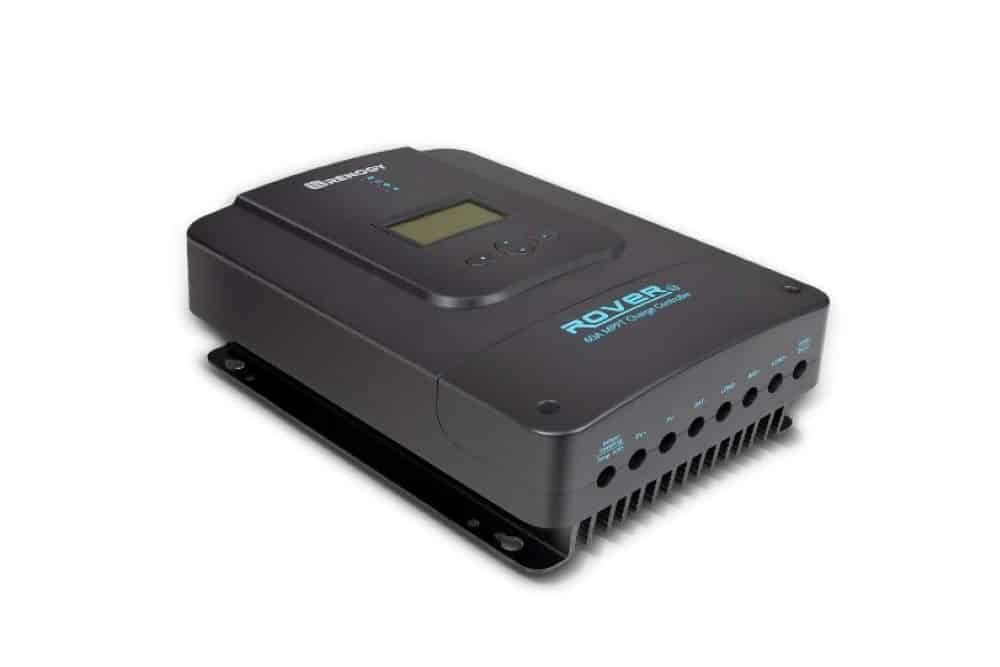
4th on my list is “Renogy 60A 12V/24V/36V/48V DC Input MPPT Solar Charge Controller.”
The Renogy 60A 12V/24V/36V/48V DC Input MPPT Solar Charge Controller is an innovative MPPT design. It is made of die-cast aluminum, which ensures excellent heat dissipation.
Furthermore, it has a high tracking efficiency of up to 99% and a peak conversion efficiency of 98%. It provides the best charging solution in cloudy environments with fluctuating maximum power points.
In addition, it automatically detects the DC system voltages of 12V, 24V, 36V, and 48V. Also, it is suitable for recreational vehicles, boats, yachts, and any off-grid system.
Even so, it has an easy-to-use LCD screen and multiple LED indicators that display system operation information, error codes, and customization parameters.
More so, it features 4-stage charging (bulk, absorption, float, and equalization) for lead-acid batteries and 2-stage charging (bulk and absorption) for lithium batteries.
Lastly, it has dimensions of 11.22 x 8.07 x 4 inches and weighs about 9.35 pounds.
Pros
- It has high tracking and peak conversion efficiency.
- Also, it can automatically detect DC system voltages.
- Furthermore, it protects fully against overload, battery overcharging, etc.
- Even so, it offers safe 4-stage charging.
- In addition, it has an LCD screen and LED indicators for display.
- Lastly, it functions effectively in cloudy environments.
Cons
- It operates best with only lead-acid and Lithium batteries.
- Also, the product warranty is not specified.
3MPPT Solar Charge Controller 60A 12V 24V 36V 48V Battery System
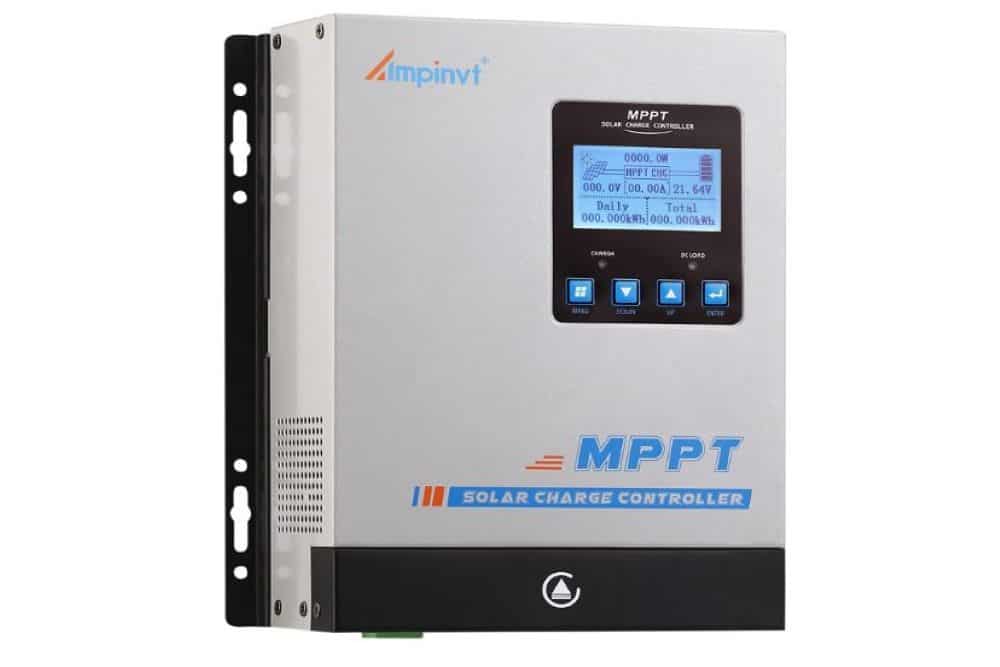
3rd on my list is “MPPT Solar Charge Controller 60A 12V 24V 36V 48V Battery System”.
The MPPT Solar Charge Controller 60A 12V 24V, 36V 48V Battery System receives 150VDC as the maximum voltage from the solar panels. It is a panel regulator for AGM, Sealed, Gel, Flooded, and Lithium batteries.
Also, it supports 4 charging options and automatically switches between 12V, 24V, and 48V. However, you need to adjust to 36V by yourself.
Furthermore, its maximum power point tracking rate is about 99 percent, and its conversion rate is 98 percent.
It offers multiple protection against overcharges, over discharges, overload, reverse polarity, short circuits, battery under voltage, and overheating.
In addition, it has an LCD screen that displays clear to see operating data and working conditions; real-time energy statistics function with multiple load control modes.
This LCD also displays the daily power generation curve and current curve.
Lastly, this product weighs about 8.16 pounds and has a dimension of 7.9 x 3.3 x 11 inches. It has a 1-year warranty.
Pros
- It supports 4-charging options.
- Also, it has high power tracking and conversion rates.
- Even so, it has an LCD screen that displays operating data.
- In addition, it offers multiple protection against overcharging, overheating, etc.
- Lastly, it has a warranty of 1 year.
Con
- It can not automatically adjust to 36 volts.
2SUNYIMA 60A MPPT Solar Charge Controller
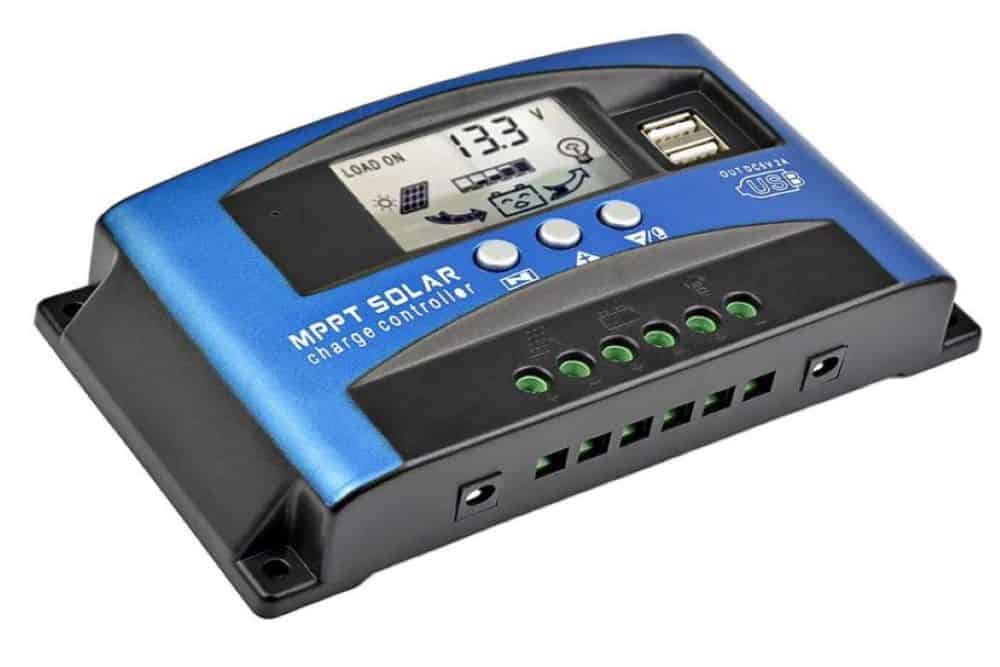
2nd on my list of the 5 best 60A solar charge controllers is “SUNYIMA 60A MPPT Solar Charge Controller”.
The SUNYIMA 60A MPPT Solar Charge Controller is a dual USB solar charge controller with a high tracking efficiency of about 99 percent. It also can detect the maximum charge current.
Furthermore, it offers reliable protection against overvoltage, short circuits, overload, overcharge, over-discharge, etc. Even so, it offers automatic focusing MPPT tracking charging, high charging efficiency, non-stop detection during charging, and bidirectional focusing tracking.
More so, it has an LCD screen that displays operational data. It also automatically adapts to voltages of 12 volts and 24 volts.
Lastly, it has a dimension of 7.8 x 4.4 x 1.9 inches and weighs about 0.75 pounds.
Pros
- It is lightweight.
- Also, it possesses dual USB ports.
- Even so, it has a high tracking efficiency.
- More so, it can automatically detect voltages of 12 and 24 volts.
- In addition, it has a reliable protection system.
- Lastly, it has an LCD screen that displays data.
Cons
- It does not operate with 36 and 48 volts.
- Even so, the product warranty is not specified.
1PowMr MPPT Charge Controller
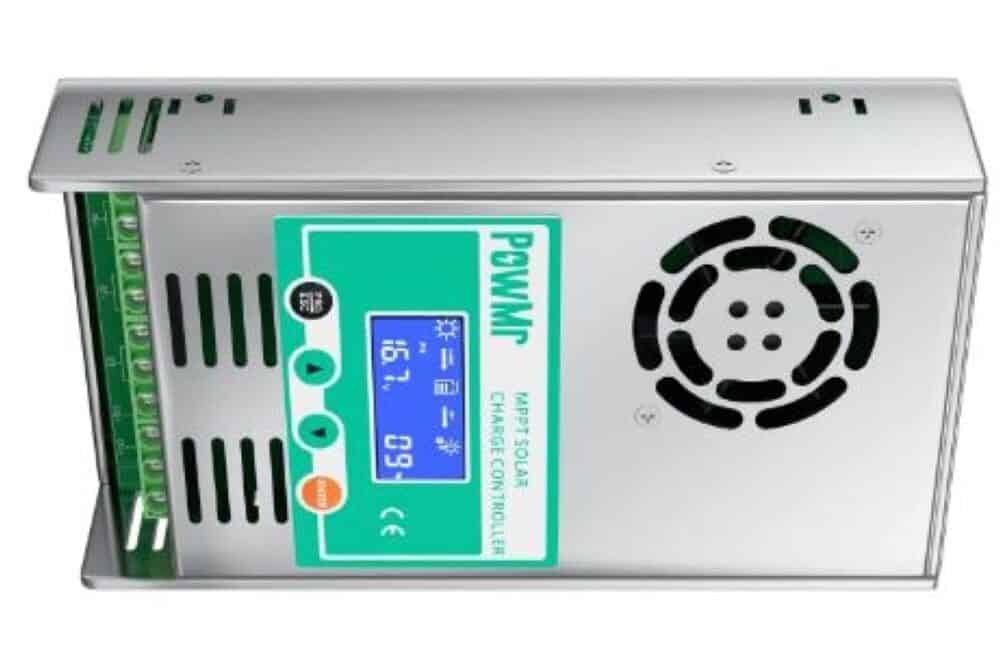
On my list of the 5 best 60A MPPT solar charge controllers, the best is PowMr MPPT Charge Controller.
The PowMr MPPT Charge Controller is a software update MPPT design. It is an intelligent system with high tracking efficiency of up to 99% and a conversion efficiency of 98%.
Also, it has a DSP controller with high performance with automatic voltage detection between 12V, 24V, 36V, and 48V. This controller also uses batteries’ voltage of more than 12V to boost the controller and ensures the battery has enough power for self-detection.
Furthermore, it has multiple battery adaptations fit for users. It is user programmable for the absorption voltage, floating voltage, low voltage disconnect, etc.
In addition, it has full system protection. It has an LCD screen that displays operating data.
Lastly, it weighs about 2.86 pounds and has a dimension of 9.92 x 8.11 x 2.87 inches. It does not detect voltage automatically when used with a lithium battery.
Pros
- It is a software MPPT design.
- Also, it adapts to multiple batteries.
- Even so, it has full system protection.
- It has an LCD screen for the display of operating data.
- Lastly, it offers automatic detection of battery voltage.
Cons
- It does not automatically detect voltage when used with a Lithium battery.
- Also, the product warranty is not specified.
5 Best 60A MPPT Solar Charge Controllers: Frequently Asked Questions
The amount of watts a 60 amp MPPT charge controller can handle depends on the voltage rating of the battery bank.
Theoretically, a 60 amp MPPT solar charge controller can handle up to 3400W, 2700W, 1700W, or 900W for battery banks with a voltage rating of 48V, 36V, 24V, or 12V, respectively.
To choose a suitable charge controller for your system, divide the total wattage of the solar panel by the voltage of your battery. The result will give you the minimum current your charge controller should handle.
For instance, a 2000W solar array with a 36V battery bank will need a solar charge controller that can handle at least 55.6A of current.
That is, 2000W/36V = 55.6A.
No.
Using the MPPT technology, the hybrid inverter optimizes the electricity the solar panel produces. Also, it controls the battery charging voltage. As a result, it prevents overcharging.
The MPPT solar charge controllers can produce more power with the same number of solar panels than the PWM charge controllers. Thus, MPPT charge controllers are more efficient.
Although, the MPPT charge controllers are more expensive than the PWM charge controllers.
The MPPT functions excellently with PV modules of 24 or 48 volts, depending on the PV modules and the charge controller. However, it brings the power into a 12 or 24 volts battery system.
5 Best 60A MPPT Solar Charge Controllers: My Final Thoughts
The kind of solar charge controller you use for your solar power system to generate electricity goes a long way in determining how effective your system will be.
Despite its high cost, the MPPT charge controller gives a more effective energy output. Thus, it is more efficient than the PWM solar charge controllers.
However, this article offers the 5 Best 60A MPPT Solar Charge Controllers and a detailed explanation of each.
Do well to choose from any of the 5 products listed above, as they are selected considering previous customers’ reviews and best sellers’ rankings.
Therefore, click on “Check Amazon” to place your order.
I hope you found this article helpful to you.
Hence, fill out the “Leave A Reply” form towards the end of this page to share your thoughts.
You may want to read other articles like this. Please visit the pages below:


